There are an estimated 175,000 SaaS companies worldwide, with the market expected to grow from $315.68 billion in 2025 to $1,131.52 billion by 2032.
What does this mean for SaaS business owners like you?
Selling your SaaS product today is like offering free samples at a bustling food market. If you don't stand out, no one stops to taste.
But a well-crafted strategy might be the difference between fading into the background and rising above the noise. That's why you need a solid SaaS go-to-market strategy to bolster your product launch.
Look behind any successful SaaS breakout, such as Slack, Salesforce, Notion, and you'll find this strategy at the core.
In this guide, we'll share our winning GTM strategy cheat codes that will change how you sell your SaaS product.
What Is a SaaS Go-To-Market Strategy?

A SaaS go-to-market (GTM) strategy is a tactical action plan that outlines how a software-as-a-service business will deliver its product to the ideal customer segments and gain a competitive edge in the market.
It covers how a SaaS company will position its product, attract leads, convert customers, and grow revenue, while aligning marketing, sales, customer success, and product teams around shared business goals.
A strong GTM strategy helps SaaS businesses:
- Identify the ideal customer profile (ICP) and target personas
- Position the product clearly in the market to differentiate from competitors
- Determine the best sales and distribution model (e.g., product-led, sales-led, or hybrid)
- Align teams and messaging across marketing, sales, and customer success
- Accelerate time-to-revenue and improve customer acquisition efficiency
- Build predictable growth by validating product-market fit and optimizing the funnel
Essentially, a GTM strategy ensures that your product doesn't just launch, but it lands with impact.
But the GTM strategy for B2B SaaS and B2C SaaS companies isn't the same.
While both B2B and B2C companies aim to get their product in front of users and convert them into paying customers, their GTM strategies differ significantly in execution:
|
Aspect |
B2B SaaS |
B2C SaaS |
|
Target Audience |
Businesses, often multiple decision-makers |
Individual consumers |
|
Sales Cycle |
Longer, involves demos, procurement, and onboarding |
Shorter, often self-serve |
|
Customer Acquisition |
Sales teams, outbound outreach, content marketing, ABM |
Performance marketing, SEO, viral loops, freemium |
|
Pricing Model |
Subscription tiers, contracts, and usage-based |
Freemium, pay-as-you-go, low-cost subscriptions |
|
Buyer Journey |
Research-heavy, ROI-focused, trust-driven |
Emotion-driven, ease of use, instant value |
Understanding these differences helps shape the right GTM playbook, whether you're targeting enterprise clients with a high-touch sales approach or scaling fast with a self-service consumer model.
Step-by-Step: Building a Go-To-Market Strategy for B2B SaaS

Developing a GTM strategy for B2B SaaS requires a systematic approach. Each step builds upon the last, creating a cohesive plan that aligns with business objectives and market demands. Below are the critical components of this process.
Market Research & Competitive Analysis
The first step in crafting a successful GTM strategy involves identifying market trends, customer pain points, and potential opportunities. Understanding the competitive landscape is equally important. Analyzing competitors' strengths and weaknesses can provide valuable insights into how to position your product effectively.
Utilize tools such as:
- Surveys
- Interviews
- Industry reports
They can help gather essential data, which will serve as the foundation for your strategy, guiding decisions related to product features, pricing, and marketing approaches. Additionally, leveraging analytics tools can provide real-time insights into market dynamics, allowing for agile adjustments to your strategy as new trends emerge or customer preferences shift.
Define Your ICP & Personas
Defining your Ideal Customer Profile (ICP) and buyer personas is crucial for targeting the right audience. Your ICP outlines the characteristics of the companies that would benefit most from your solution, while buyer personas delve into the specific roles within those companies that will engage with your product.
Creating detailed personas helps in tailoring messaging and marketing efforts. Consider factors such as:
- Industry
- Company size
- Specific challenges faced by potential customers
This targeted approach ensures that marketing efforts resonate with the audience, increasing the likelihood of conversion. Furthermore, incorporating behavioural data, such as purchase history and engagement levels, can refine your personas, making them even more representative of your ideal customers.
Craft Your Messaging & Positioning
Once the target audience is defined, the next step is to craft compelling messaging and positioning. This involves articulating the unique value proposition of your product and how it addresses the needs of your target customers.
Your messaging should be clear, concise, and aligned with the pain points identified during market research. Effective positioning differentiates your product from competitors, highlighting what makes it unique and why customers should choose it over others. Utilizing storytelling techniques can enhance your messaging, creating an emotional connection with potential customers and making your product more memorable.
Choose a Distribution & Sales Model
Selecting the right distribution and sales model is crucial for effectively reaching your target audience. Common models for B2B SaaS include:
- Direct sales
- Channel partnerships
- Self-service options
Each model has its advantages and challenges, and the choice should align with your product type and customer preferences.
For instance, a complex enterprise solution may benefit from a direct sales approach, while a user-friendly tool might thrive with a self-service model. Understanding the sales cycle and customer journey will help determine the most effective approach. Additionally, considering hybrid models that combine elements of both direct and indirect sales can provide flexibility and expand your reach, catering to diverse customer needs.
Select Your Marketing Channels
With your messaging and sales model in place, the next step is to select the appropriate marketing channels. This could include digital marketing, content marketing, social media, email campaigns, and more. Each channel has its strengths and can be leveraged to reach different segments of your audience.
It's essential to evaluate where your target customers spend their time and tailor your marketing efforts accordingly. A multi-channel approach often yields the best results, allowing for greater visibility and engagement. Moreover, integrating marketing automation tools can streamline your efforts across channels, ensuring consistent messaging and timely follow-ups that nurture leads throughout the sales funnel.
Build Your Pricing Strategy
Your pricing strategy should reflect the value provided by your product while remaining competitive within the market. Various pricing models exist, including:
- Subscription-based
- Tiered pricing
- Freemium options
Testing different pricing strategies can help determine what resonates best with your audience. Gathering feedback from early adopters can provide insights that refine your pricing approach, ensuring it aligns with customer expectations and market standards. Additionally, consider implementing promotional pricing or discounts for early sign-ups to incentivize initial adoption and generate buzz around your launch.
Launch & Iterate Based on Feedback
The final step in the GTM strategy is the launch. This is when all the planning and preparation come to fruition. However, the process doesn't end with the launch. Gathering feedback from users is vital for continuous improvement.
Monitoring key performance indicators (KPIs) and customer feedback will inform necessary adjustments to the product, messaging, or marketing tactics. Iteration based on real-world data ensures that the product remains relevant and continues to meet customer needs. Engaging with your user community through forums or social media can also provide ongoing insights, fostering a sense of loyalty and encouraging users to become advocates for your brand.
SaaS Go-To-Market Strategy Examples

Learning from successful SaaS companies can provide valuable insights into effective go-to-market strategies. Below are three notable examples that illustrate different approaches to GTM.
Example 1: Slack's Product-Led GTM Approach
Slack's go-to-market strategy is a prime example of a product-led approach. Here's a breakdown of Slack's GTM strategy:
- Offering a freemium model allowed Slack users to experience the product's value before committing to a paid plan. This strategy not only drove user acquisition but also encouraged organic growth through word-of-mouth referrals.
- Creating a seamless user experience, ensuring that teams could easily collaborate and communicate. This emphasis on product quality and user satisfaction contributed to its rapid growth and widespread adoption across various industries.
- Integration capabilities with other tools and platforms made it an indispensable part of many workflows, reinforcing its value proposition and encouraging teams to adopt it as their primary communication tool.
Example 2: Salesforce's Enterprise-Focused Strategy
Salesforce exemplifies an enterprise-focused GTM strategy, targeting large organizations with complex needs. Here's how they did it:
- Offering customizable solutions and robust support allowed Salesforce to position itself as a leader in customer relationship management (CRM).
- The company invested heavily in building relationships with key decision-makers within target organizations, utilizing a direct sales approach that emphasized personalized service. This strategy not only helped in acquiring large clients but also fostered long-term partnerships.
- Salesforce's commitment to continuous innovation, including the introduction of AI-driven analytics and automation tools, has kept it ahead of its competitors and ensured that its offerings remain relevant in an ever-evolving market.
Example 3: Notion's Community-Driven Growth
Notion has successfully leveraged community-driven growth as part of its GTM strategy. By fostering a strong user community and encouraging user-generated content, Notion created a sense of ownership among its users.
This approach not only enhanced user engagement but also provided valuable feedback for product development. Notion's emphasis on community has helped it build a loyal customer base, driving organic growth through user advocacy. The company regularly hosts events, webinars, and workshops that not only educate users about the platform's capabilities but also enable them to share their own tips and workflows, further enriching the community experience and solidifying Notion's role as a collaborative tool in both personal and professional settings.
Common Challenges in SaaS GTM Strategies (And How to Overcome Them)

Launching a SaaS product is not without its hurdles. Companies often encounter various challenges that can derail their GTM efforts. They include:
Misaligned Sales And Marketing Teams
When sales and marketing departments don't work together cohesively, it can lead to inconsistent messaging, wasted resources, and missed opportunities.
To overcome this, establishing clear communication channels and shared goals is vital. Regular meetings and collaborative planning sessions can help ensure that both teams are on the same page. Utilizing integrated tools for tracking leads and customer interactions can also facilitate better alignment.
Poor Product-Market Fit
A lack of product-market fit occurs when the product does not adequately meet the needs or solve the problems of the target market. Without a strong fit, customer acquisition and retention become challenging.
To avoid this, conduct thorough market research before product development. Engage with potential customers through surveys, interviews, and beta testing to get valuable insights. Also, implement continuous feedback loops post-launch to refine the product to better align with market demands.
Ineffective Messaging
Many SaaS companies struggle with crafting messages that resonate with their audience. Vague or overly technical language can alienate prospects and hinder conversion rates.
To enhance messaging, it's essential to emphasize the benefits of the product over its features. Tailoring messages to specific customer personas can also enhance relevance. Regularly testing different messaging strategies through A/B testing can provide valuable insights into what resonates most effectively with the audience.
Low User Activation Or Retention
Even with a successful launch, low user activation and retention rates can pose significant challenges. If users do not engage with the product or fail to see its value, they are unlikely to remain long-term customers.
To combat this, implement onboarding processes to guide new users through the product and enhance their initial experience. Providing ongoing support and resources, such as tutorials and webinars, can also help users realize the full potential of the product, thereby increasing retention rates.
Key Metrics to Track in Your SaaS GTM Plan

Tracking the right SaaS metrics is essential for evaluating the effectiveness of a GTM strategy. These metrics provide insights into customer behaviour, financial health, and overall business performance:
Customer Acquisition Cost (CAC)
Customer Acquisition Cost (CAC) measures the total cost of acquiring a new customer. This includes marketing expenses, sales team salaries, and any other costs associated with the acquisition process. Understanding CAC is vital for assessing the efficiency of marketing and sales efforts. A high CAC can be a red flag, indicating that the company may need to reevaluate its marketing strategies or sales tactics.
Monthly Recurring Revenue (MRR)
Monthly Recurring Revenue (MRR) refers to the predictable revenue generated from subscriptions on a monthly basis. MRR provides insights into financial health and helps in forecasting future revenue. A steady increase in MRR can indicate a successful GTM strategy, while fluctuations may signal issues that require attention.
Customer Lifetime Value (LTV)
Customer Lifetime Value (LTV) estimates the total revenue a business can expect from a single customer throughout their relationship. Understanding LTV helps in determining how much can be spent on acquiring customers while maintaining profitability. A higher LTV relative to CAC indicates a healthy business model, allowing for sustainable growth.
Churn Rate
Churn rate measures the percentage of customers who stop using a product over a specific period. High churn rates can indicate dissatisfaction or a lack of value perceived by customers, making it a critical metric for SaaS businesses. Understanding churn not only helps in identifying potential issues but also in developing strategies to mitigate them.
Activation Rate
Activation rate refers to the percentage of users who take a specific action that signifies they are deriving value from the product. This metric is crucial for understanding user engagement and the effectiveness of onboarding processes. A high activation rate often correlates with increased customer satisfaction and long-term retention, making it a key focus for SaaS companies.
Sales Cycle Length
The sales cycle length measures the time it takes for a lead to convert into a paying customer. Understanding the sales cycle is essential for forecasting revenue and managing resources effectively. A lengthy sales cycle may indicate that leads are not adequately qualified or that the sales process needs refinement.
Conclusion
A well-structured SaaS Go-To-Market strategy is essential for navigating the complexities of launching and growing a SaaS business. By understanding common challenges, tracking key metrics, and continually refining approaches, you can enhance your chances of success in a competitive market. Whether through aligning sales and marketing teams, ensuring product-market fit, or leveraging effective messaging, each element plays a vital role in achieving business objectives.
Ultimately, the journey of a SaaS company is one of continuous learning and adaptation. By staying attuned to market trends and customer feedback, your SaaS business can not only survive but thrive in the cut-throat SaaS landscape.
Roketto empowers SaaS businesses to build effective go-to-market strategies by aligning inbound marketing, sales enablement, and data-driven content creation. From refining buyer personas and messaging to implementing HubSpot-powered funnels and performance tracking, we ensure every stage of your GTM plan is optimized for growth.
Ready to launch with confidence? Contact us today to see how Roketto can accelerate your SaaS success.

Kabue Muriithi
Kabue is a freelance content writer specializing in B2B SaaS and fintech. He creates insightful, results-driven content that helps brands engage their audience, boost organic traffic, and fuel long-term organic growth. When he’s not writing, you’ll likely find him exploring car tech or optimizing his home workspace.











2.png)
2.png)









